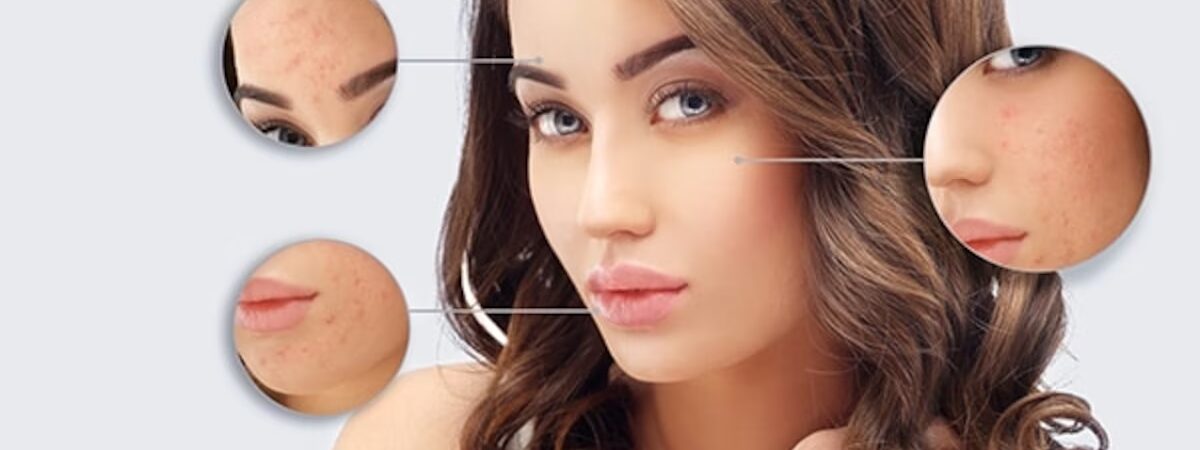Acne scars are a common aftermath of severe and even moderate acne, leaving many individuals seeking effective treatments to restore their skin’s appearance. Singapore, known for its advanced medical and cosmetic dermatology, offers a wide range of acne scar treatments. In this article, we explore the types of acne scars and discuss various treatment options available, including Pico Laser, Fractional CO2 Laser, Rejuran S, and Dermal Fillers.
Types of Acne Scars
Atrophic Scars
Atrophic scars are the most common type of acne scars. They appear as depressed and flat areas that sit below the surrounding skin. These scars occur when the skin does not produce enough collagen during the healing process of acne. Atrophic scars are further classified into boxcar, ice pick, and rolling scars. Boxcar scars are broad, usually with sharp edges, while ice pick scars are narrow and deep, making them more challenging to treat. Rolling scars, on the other hand, have a sloping edge and give the skin a wavy appearance.
Hypertrophic and Keloid Scars
Hypertrophic scars are raised scars that stay within the boundaries of the original wound. They are the result of an overproduction of collagen. Similarly, keloid scars are also raised; however, they extend beyond the original injury site. Keloid scars are more common in people with darker skin tones and can be more difficult to treat due to their tendency to recur.
Post-Inflammatory Hyperpigmentation (PIH)
Though not a true scarring, PIH is often grouped with acne scars because it is a form of skin discoloration that occurs after an inflammatory wound. It presents as flat areas of discoloration that can range from pink to red, purple, brown, or black, depending on skin tone and the depth of the discoloration.
Acne Scar Treatments in Singapore
When it comes to acne scar treatment in Singapore, patients have access to some of the latest and most effective procedures. Each treatment option offers different benefits and works best on certain types of scars.
Pico Laser
The Pico Laser is a non-invasive laser treatment that uses picosecond laser technology to target acne scars. The laser emits ultra-short pulses that shatter the pigment or scar tissue without causing thermal damage to the surrounding tissue. Pico Laser treatments stimulate collagen production and can significantly improve the appearance of atrophic scars and PIH. Its high precision and minimal downtime make it a popular choice among those seeking acne scar treatment in Singapore. Benefits of Pico Laser include its effectiveness in treating a range of scar types, minimal discomfort during the procedure, and a shorter recovery time compared to other laser treatments.
Fractional CO2 Laser
Fractional CO2 Laser therapy is an ablative treatment that uses a carbon dioxide laser to create microscopic wounds within the scar tissue. This controlled damage stimulates the body’s natural healing process and the production of new collagen. The fractional approach means that only a fraction of the skin is directly treated with the laser, leaving surrounding tissues intact, which promotes faster healing. This acne scar treatment in Singapore is especially beneficial for those with atrophic scars, as it can dramatically improve skin texture and smoothness. However, due to its ablative nature, it requires more downtime than non-ablative treatments like the Pico Laser.
Rejuran S
Rejuran S is a relatively new treatment in the field of dermatology. It is an injectable polynucleotide (PN) filler that is derived from salmon DNA. Rejuran S specifically targets acne scars by promoting collagen regeneration and repairing damaged skin cells. The treatment is said to be effective for improving skin elasticity, hydration, and texture. The PN molecules in Rejuran S are highly biocompatible, which minimizes the risk of adverse reactions. This treatment can be particularly beneficial for atrophic scars, providing a gradual improvement in skin texture and firmness. The benefits of Rejuran S include a natural healing process and suitability for sensitive skin types.
Dermal Fillers
Dermal fillers are injectables used to fill in atrophic scars and restore the skin’s volume. These fillers are often made of hyaluronic acid, a substance that naturally occurs in the skin. By injecting fillers directly into the scar tissue, they can raise the depressed areas to the level of the surrounding skin, thus reducing the appearance of scars. Fillers can be particularly effective for rolling scars and some boxcar scars. The benefits of dermal fillers include immediate results and minimal downtime, although they are not a permanent solution and typically require repeat treatments to maintain the effect.
Choosing the Right Treatment
Selecting the right acne scar treatment in Singapore requires a comprehensive evaluation by a dermatologist or skin specialist. Factors such as the type and severity of the scars, the patient’s skin type, and their overall health must be taken into consideration. A personalized treatment plan may include one or multiple treatment options to achieve the best results.


